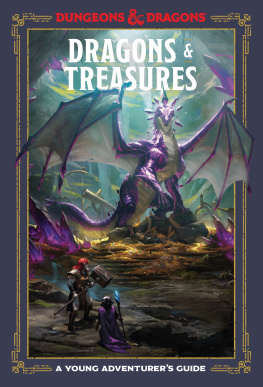Ed Power - Dragons in the Snow
Here you can read online Ed Power - Dragons in the Snow full text of the book (entire story) in english for free. Download pdf and epub, get meaning, cover and reviews about this ebook. publisher: Mountaineers Books, genre: Detective and thriller. Description of the work, (preface) as well as reviews are available. Best literature library LitArk.com created for fans of good reading and offers a wide selection of genres:
Romance novel
Science fiction
Adventure
Detective
Science
History
Home and family
Prose
Art
Politics
Computer
Non-fiction
Religion
Business
Children
Humor
Choose a favorite category and find really read worthwhile books. Enjoy immersion in the world of imagination, feel the emotions of the characters or learn something new for yourself, make an fascinating discovery.
- Book:Dragons in the Snow
- Author:
- Publisher:Mountaineers Books
- Genre:
- Rating:4 / 5
- Favourites:Add to favourites
- Your mark:
- 80
- 1
- 2
- 3
- 4
- 5
Dragons in the Snow: summary, description and annotation
We offer to read an annotation, description, summary or preface (depends on what the author of the book "Dragons in the Snow" wrote himself). If you haven't found the necessary information about the book — write in the comments, we will try to find it.
Dragons in the Snow — read online for free the complete book (whole text) full work
Below is the text of the book, divided by pages. System saving the place of the last page read, allows you to conveniently read the book "Dragons in the Snow" online for free, without having to search again every time where you left off. Put a bookmark, and you can go to the page where you finished reading at any time.
Font size:
Interval:
Bookmark:

DRAGONS
IN THE
SNOW


MOUNTAINEERS BOOKS is dedicated to the exploration, preservation, and enjoyment of outdoor and wilderness areas.
1001 SW Klickitat Way, Suite 201, Seattle, WA 98134
800-553-4453, www.mountaineersbooks.org
Copyright 2020 by Edward Power
All rights reserved. No part of this book may be reproduced or utilized in any form, or by any electronic, mechanical, or other means, without the prior written permission of the publisher.
Mountaineers Books and its colophon are registered trademarks of The
Mountaineers organization.
Printed in the United States of America
Distributed in the United Kingdom by Cordee, www.cordee.co.uk
23 22 21 201 2 3 4 5
Editor: Amy Smith Bell
Design and layout: Jen Grable
Cover photograph: istock/AWSeebaran
Library of Congress Cataloging-in-Publication Data is on file for this title.
Mountaineers Books titles may be purchased for corporate, educational, or other promotional sales, and our authors are available for a wide range of events. For information on special discounts or booking an author, contact our customer service at 800-553-4453 or .
Printed on FSC-certified materials
ISBN (paperback): 978-1-68051-296-0
ISBN (ebook): 978-1-68051-297-7

For Marguerite, who is far more
than my ski partner
Ill tell you whats interesting about snow. Ninety-nine times out of a hundred, nature allows you to get away with it. Then there is one time, maybe, that you dont recognize something is slightly different. And I think thats probably when most experienced people get tricked.
Craig Gordon, forecaster, Utah Avalanche Center
Reading snow is like listening to music. To describe what youve read is like explaining music in writing.
Peter Hoeg, Smillas Sense of Snow
When I moved full-time to Northern Utah in January 2016, I brought with me a thirty-year career of curiosity as a newspaper journalist, and decades of enthusiasm for recreational skiing. In those first months, I was struck by the almost daily, early morning booms of avalanche mitigation bombs echoing across the valley in front of my home. As an amateur skier, I was inspired to learn more about the avalanche and backcountry skiing professionals who do this work. The result is this book based on extensive in-person or, in some cases, phone interviews with the people whose stories are recounted here. Documents related to avalanche advisories, accident investigations, written survivor accounts, weather data, websites, and other sources were also heavily utilized, and I have sought to clearly attribute those sources. With few exceptions, interviews were recorded and transcribed for narrative accuracy. Many of the people quoted in this book reviewed drafts of chapters in which their stories and voices appear. Material from newspapers, magazines, and books is duly attributed.
The risks in backcountry skiing and snowboarding are part of the allure as the rider ventures into wilderness terrain and often pristine snow. But anyone undertaking these activities should do so only after receiving avalanche awareness training and obtaining such specialized gear as a beacon, probe pole, and shovel. Traveling with a skilled partner is essential.
Emergency winter rescues in the mountains are, by nature, extremely dangerous. They are fast-paced, may involve makeshift medical procedures, often involve moments of confusion, and run on high human emotions. I have strived to accurately represent the heroic work of snow professionals and nonprofessionals whose selfless efforts have, without question, saved many lives. Any misrepresentations of facts, attributions, or other details related to these stories are unintended.
On January 5, 2017, nearly two hundred miles off the coast of northwestern North America, above the seething, frigid waters of the Gulf of Alaska, an evolutionary moment began. It was unseen by human eyes. Even the roving, photographic gaze of a geostationary weather satellite, orbiting 22,300 miles above the equator, did not at first distinguish this cold whiff of wind and water. Many months later, a weather scientist named Randy Graham, working out of an office in Salt Lake City, Utah, would describe it as a bare finger, like a tiny fetus forming. Once it had grown to far larger proportions, he retroactively altered his categorization, dubbing it a fire hose.
But it was really more like a dragon. Uncoiling from the milky, numbing waters of the Alaskan gulf, its birth was a dragons tail dipping into the waves of the notoriously anarchic gulf, feeding the buildup of its body and head. For Graham and his colleagues at the National Oceanic and Atmospheric Administration (NOAA) offices, the tail grew into a white smear of water vapor across hundreds of square miles of the North Pacific. They saw it grow in time lapse, fifteen-minute increments, through daytime photos, and into nighttime infrared images, blue-hued water clouds swaddling the dragons back, and white ice clouds rimming its sinuous jaws.
The storm was still more of a meteorological serpent than what avalanche forecasters would later call a dragon in the snow. But it grew quickly. The flourishing dragon acquired motion, its tongue of wind sweeping more moisture up with its elongating tail. As that tail dipped deeper into the Pacific, it grew larger, whipping the entire length of its mass into a spinning frenzy of water and warm, tropical wind sucked from the south. The storm crawled aggressively across the oceans surface, stirring ever bigger waves like deep, maritime claw marks.
In the air, seabirds raced to escape it. Beneath the roiling sea surface, fish sensed the disintegrating world above. Though still far out to sea, this storm dragon, becoming a yet unseen creature from ashore, began to take on more form. From space, it was a white blur of inchoate energy, yet it was learning form, strengthening, gathering a more precise direction. Within a few days, the tail of the storm dragon had become massive, sucking more and more energy into its fattening belly. Instinct seemed to have taken over, and the maw of it inarguably pointed southeast.
Had forecasters studied it from the beginning, they could have charted its immature yet undeniable track. It was headed for Oregon and then into the Sierra Nevada of Northern California. Soon, under the darkness of night, this snow dragon was hurtling toward the coastline, making landfall. In the hours ahead, it was revealed as a monster fully born.
Once it had crossed nearly two hundred miles of the California mainland, the storm initiated its climb into the Sierra on January 9. So thick and heavy were its clouds and snow, it obliterated light and the expanse of daytime sky. The usual horizon of cross-stitched mountain peaks disappeared. Anything that might have suggested a redoubt of human survival seemed to have vanished. Snow, usually so welcome in Californias parched terrain, turned to something more like the delivery of a plague.
Font size:
Interval:
Bookmark:
Similar books «Dragons in the Snow»
Look at similar books to Dragons in the Snow. We have selected literature similar in name and meaning in the hope of providing readers with more options to find new, interesting, not yet read works.
Discussion, reviews of the book Dragons in the Snow and just readers' own opinions. Leave your comments, write what you think about the work, its meaning or the main characters. Specify what exactly you liked and what you didn't like, and why you think so.












